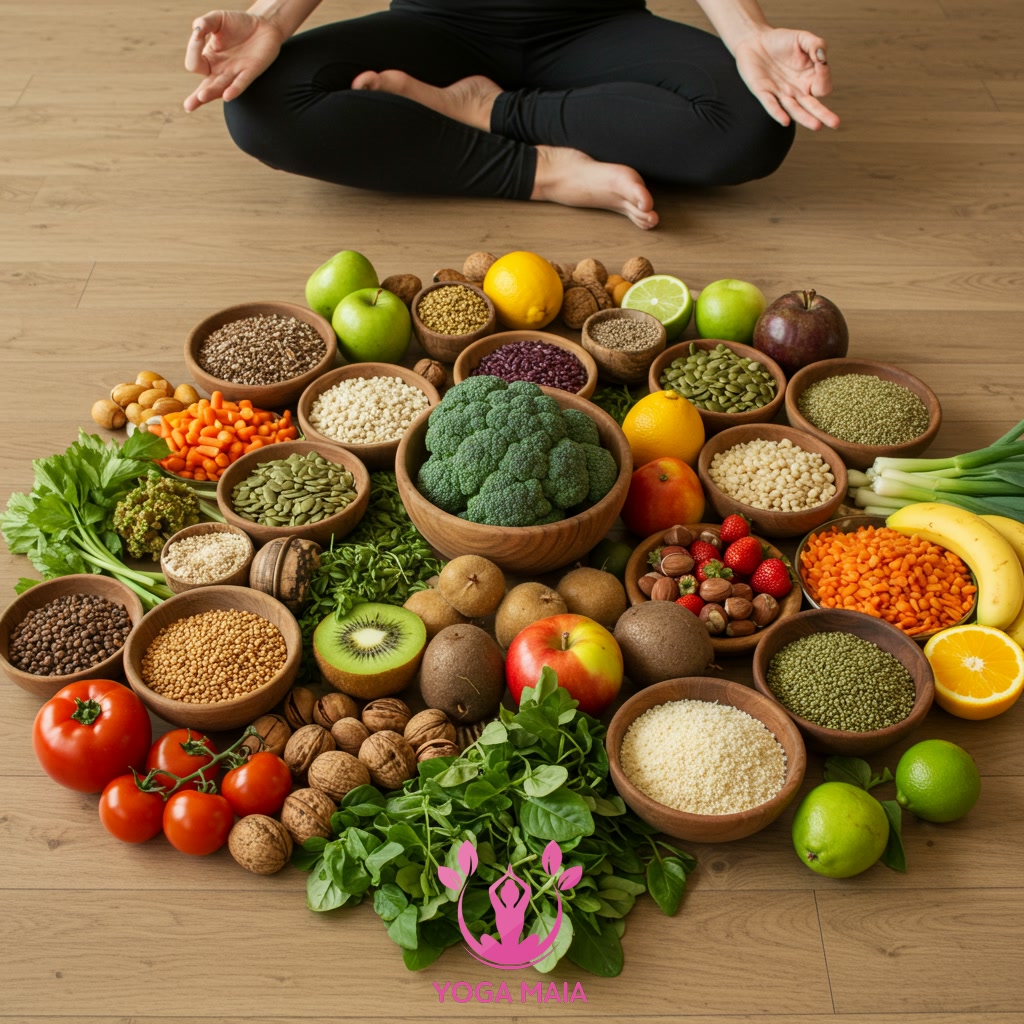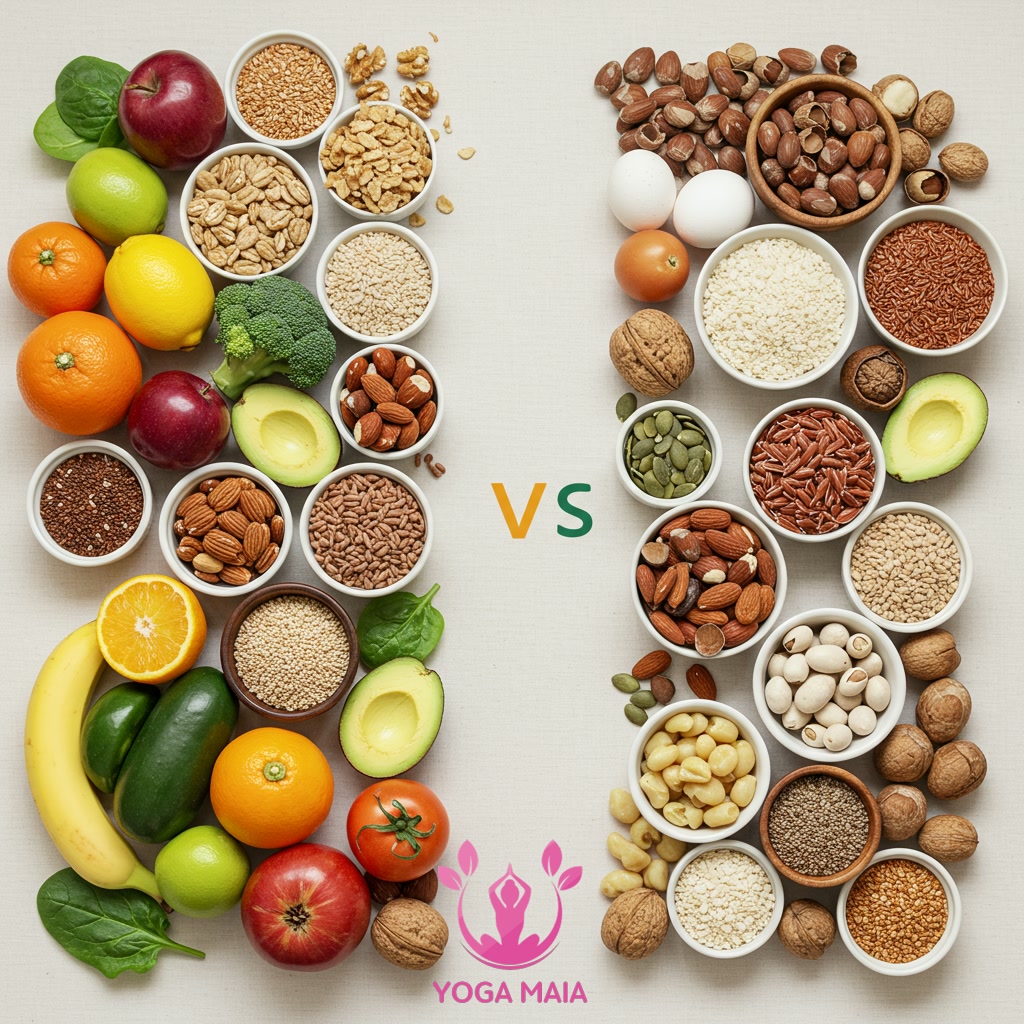Yoga Blog
Nourishing Your Practice: Understanding the Principles of a Yoga Diet for Wellness

This content explores the connection between nutrition and the practice of yoga. It delves into the core principles of a yoga diet designed to support both physical well-being and mental clarity. Understanding these dietary guidelines can enhance your yoga journey and contribute to overall wellness.
Table of Contents
- Section 1: Introduction: The Connection Between Yoga and Diet
- Section 2: Understanding the Principles of a Yoga Diet
- Section 3: Recommended Foods and Foods to Limit
- Section 4: Mindful Eating Practices in a Yoga Diet
- Section 5: Benefits of a Yoga Diet for Wellness and Practice
- Section 6: Integrating a Yoga Diet into Your Daily Life
Section 1: Introduction: The Connection Between Yoga and Diet
Yoga is widely recognized for its physical postures and breathing exercises, but the practice extends beyond the mat, encompassing a holistic approach to well-being. A fundamental aspect often discussed in traditional yoga philosophy is the importance of diet. The food we consume significantly impacts our physical body, energy levels, and mental state – all of which directly influence the quality and depth of our yoga practice. Understanding the connection between what we eat and how we feel, both on and off the mat, is crucial for cultivating a more balanced and fulfilling yoga journey. This introduction explores why integrating thoughtful dietary choices with your yoga routine can amplify its benefits and contribute to overall vitality.

Section 2: Understanding the Principles of a Yoga Diet
Moving beyond the physical postures, a core component of the holistic yoga path involves understanding and implementing a specific approach to nutrition. The principles of a yoga diet are rooted in promoting physical lightness, mental clarity, and spiritual well-being. Key among these is the emphasis on sattvic foods – those considered pure, fresh, light, and easy to digest, such as fruits, vegetables, grains, and legumes. Equally important are moderation, eating just enough to nourish the body without feeling heavy, and the practice of mindful eating, paying full attention to the food and the act of consumption. This dietary philosophy also generally advises limiting or avoiding rajasic (stimulating) and tamasic (dulling) foods, favoring natural, seasonal ingredients prepared with care. Adhering to these principles aims to create inner harmony and support the energy flow beneficial for yoga practice.

Section 3: Recommended Foods and Foods to Limit
Building upon the foundational principles of yoga nutrition, the practical application involves making conscious food choices. A yoga-aligned diet primarily recommends ‘sattvic’ foods, which are fresh, pure, wholesome, and easily digestible. This category includes vibrant fresh fruits and vegetables, whole grains like rice and oats, legumes, nuts, seeds, and moderate amounts of dairy if well-tolerated. These foods are believed to promote clarity, calmness, and sustained energy, supporting a peaceful state of mind conducive to practice. Conversely, ‘rajasic’ and ‘tamasic’ foods are generally advised to be limited or avoided. Rajasic foods, such as excessive spices, stimulants like caffeine, and fried items, can create restlessness or agitation. Tamasic foods, including processed items, stale food, meat, and alcohol, are thought to induce lethargy and dullness. By favoring sattvic options, practitioners aim to nourish the body and mind in a way that enhances their yoga journey and overall well-being.

Section 4: Mindful Eating Practices in a Yoga Diet
Building upon the conscious selection of sattvic foods, a crucial aspect of a yoga diet is the practice of mindful eating. This goes beyond *what* you eat to focus on *how* you eat. Mindful eating involves paying full attention to the experience of eating, engaging all your senses – noticing the colors, smells, textures, and tastes of your food. It encourages eating slowly, chewing thoroughly, and listening to your body’s hunger and fullness cues. Practicing mindful eating fosters a deeper connection to your food, promotes better digestion, reduces overeating, and cultivates a sense of gratitude for the nourishment received. It transforms the act of eating from a routine task into a meditative practice, aligning your dietary habits more closely with the principles of yoga.

Section 5: Benefits of a Yoga Diet for Wellness and Practice
Building upon the conscious selection of sattvic foods and the practice of mindful eating, embracing a yoga diet offers profound benefits for both overall wellness and dedicated practice. This approach to nutrition helps cultivate a sense of lightness and energy, reducing the lethargy often associated with heavy or processed foods. Improved digestion and nutrient absorption contribute to physical vitality, making postures feel more accessible and comfortable on the mat. Beyond the physical, this diet supports mental clarity and emotional balance, fostering a calmer and more focused state essential for meditation and deeper yogic practices. By nourishing the body with pure, vibrant foods consumed mindfully, practitioners can enhance their resilience, improve concentration, and experience a more harmonious connection between their physical and spiritual selves, truly supporting their yoga journey.

Section 6: Integrating a Yoga Diet into Your Daily Life
Moving from understanding the principles of a yoga diet, such as selecting sattvic foods and practicing mindful eating, the next step involves seamlessly weaving these concepts into your everyday existence. This isn’t about adhering to a rigid, restrictive plan, but rather cultivating conscious habits around food choices and consumption throughout your day. Practical integration involves mindful meal planning, preparing nourishing meals at home whenever possible, making informed decisions when dining out, and paying attention to hunger and fullness cues. It’s a continuous process of aligning your dietary choices with your wellness goals and yoga practice, supporting sustained energy levels, mental clarity, and overall physical vitality. Embracing this approach fosters a deeper connection with your body and enhances the benefits derived from your time on the mat.













